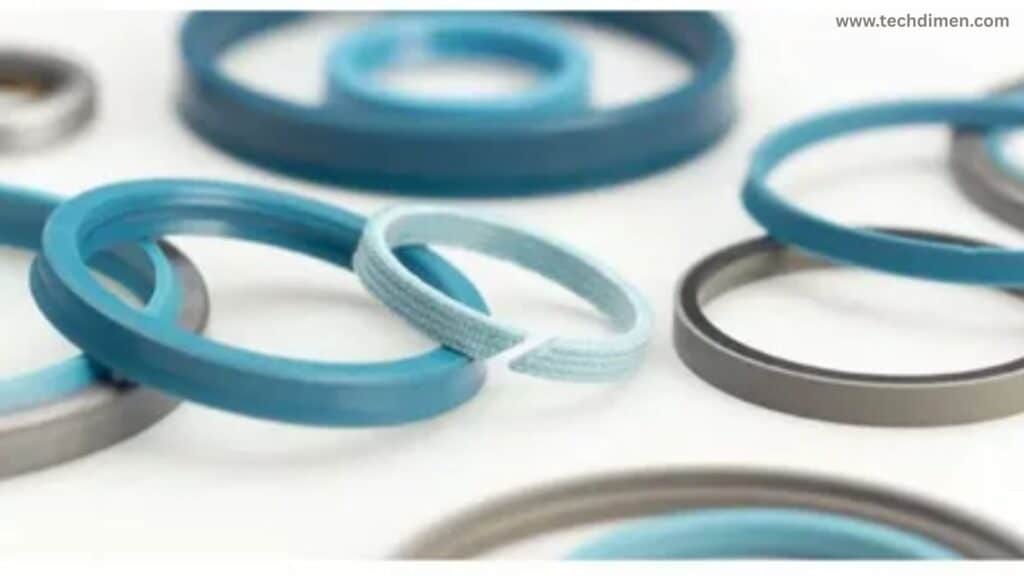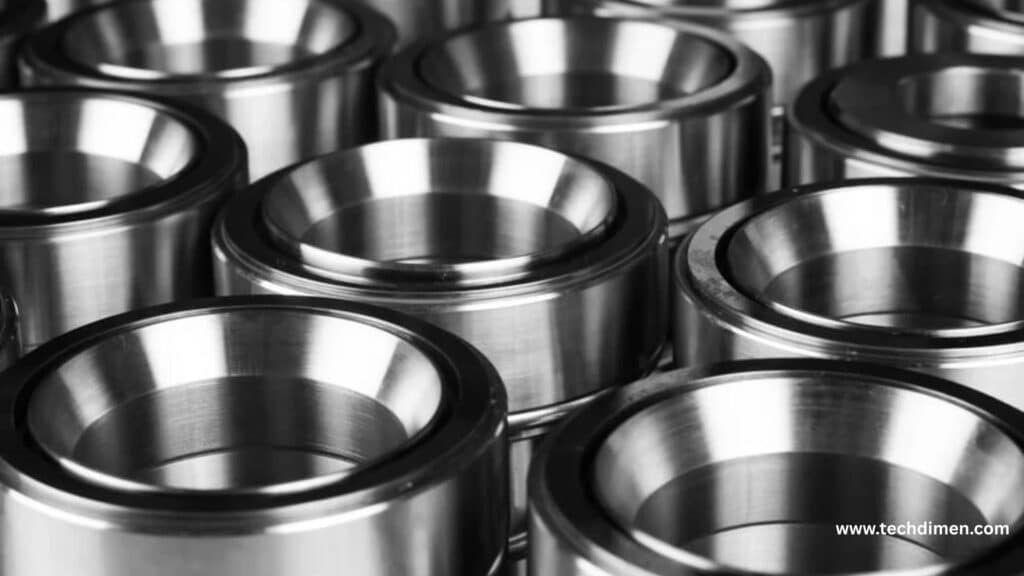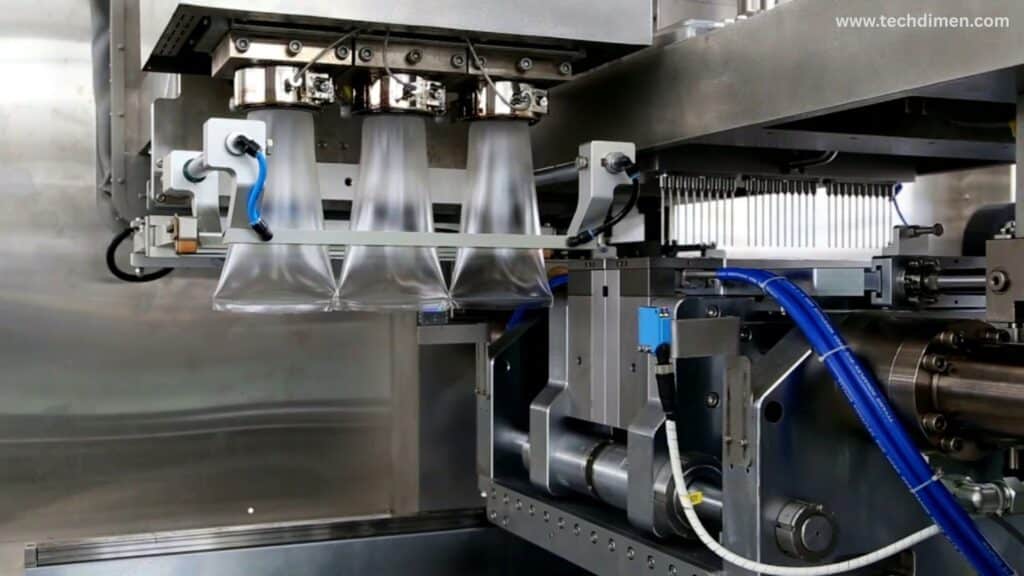Sealing systems are some of the most critical yet often overlooked elements in modern engineering. Whether you’re dealing with high-speed pumps, aircraft turbines, or delicate pharmaceutical equipment, seals are the silent guardians that prevent leaks, maintain pressure, and ensure machinery operates efficiently. This in-depth look at seal technology explores its many forms, how it’s used across industries, what materials are commonly involved, and how innovations are shaping its future.
What Is Seal Technology and Why Does It Matter?

Seal technology refers to the systems and materials used to prevent fluid or gas from escaping a mechanical assembly. In any machine where two components meet, there’s a potential for leakage. Seals close those gaps. Without proper sealing, systems lose efficiency, risk contamination, and may even fail entirely. From aerospace and automotive systems to food production and pharmaceutical manufacturing, seals ensure reliability and safety under a wide range of operational conditions.
Exploring the Different Types of Seals
Seals fall into two primary categories based on how they interact with the machine: static and dynamic.
Static seals are designed for applications where the sealing surfaces do not move relative to each other. Common examples include gaskets and O-rings. Gaskets typically lie flat between two components, such as flanges, and prevent leaks under compression. O-rings are circular elastomeric seals that compress into grooves to block the passage of fluids or gases.
Dynamic seals, on the other hand, are required when surfaces are in motion relative to each other. These can be further divided into rotary and reciprocating seals. Rotary seals are used where parts rotate, like in engine shafts or gearboxes. Reciprocating seals are found in systems with linear movement, such as pistons or hydraulic cylinders.
Another important category is mechanical seals. These are more advanced sealing solutions, typically found in pumps and compressors. A mechanical seal has both a stationary and a rotating face. Together, they form a seal where the rotating shaft passes through a stationary housing. A thin film of fluid lubricates the faces, which reduces friction while ensuring a tight seal.
Where Seal Technology Is Applied

Seals are ubiquitous in modern industries. In the automotive sector, they prevent oil and coolant leaks in engines, keep brake systems pressurized, and protect transmission components from contamination. Without reliable seals, cars would leak essential fluids and quickly become inoperable.
In aerospace, sealing solutions face some of the most demanding environments on Earth. They must withstand extreme temperatures, rapid pressure changes, and aggressive fuels. A single seal failure in an aircraft hydraulic system could jeopardize safety, making precision and durability paramount.
The oil and gas industry also relies heavily on seals, particularly in drilling operations and pipeline systems. Here, the primary concern is preventing leaks of hazardous or flammable substances under high pressure.
In the pharmaceutical and food industries, seals play a critical role in maintaining hygiene and preventing contamination. Production lines must meet strict regulatory standards, and any seal failure could compromise product safety.
What Are Seals Made From?
Material selection is one of the most important aspects of sealing technology. Each application demands a different set of material properties, such as chemical resistance, temperature tolerance, or mechanical strength.
Elastomers are among the most commonly used materials. Nitrile rubber, often known as NBR, is widely used in automotive applications because it resists oils and fuels. Viton, a brand of fluorocarbon elastomer, performs well in chemical environments and is frequently used in aerospace and industrial systems. EPDM, another synthetic rubber, is valued for its resistance to weathering and ozone exposure, making it ideal for outdoor applications.
Thermoplastics like PTFE, often known by the brand name Teflon, are chosen for their chemical inertness and ability to withstand high temperatures. Ultra-high-molecular-weight polyethylene (UHMWPE) is another thermoplastic that offers high impact resistance and is often used in food production environments.
In applications where extreme strength is required, metals come into play. Stainless steel offers excellent corrosion resistance and is used in high-pressure systems, while Inconel, a nickel-based alloy, provides exceptional strength at high temperatures and is favored in aerospace and turbine designs.
For the most demanding conditions, composite materials such as carbon graphite or combinations of polymers and fibers are used. These advanced materials offer a unique balance of strength, chemical resistance, and durability.
How Mechanical Seals Actually Work
A mechanical seal functions by tightly pressing two ultra-flat surfaces together one rotates with the shaft, while the other remains stationary with the pump housing. Between them, a thin layer of fluid acts as both a lubricant and a barrier to prevent leakage. This controlled leakage film is crucial. It minimizes wear and reduces heat buildup, ensuring long service life.
The components of a mechanical seal include a seal face, secondary seals (like O-rings), a spring mechanism to maintain contact, and a gland to mount the assembly. The seal’s success hinges on precision. Even a small imperfection in the seal face or a change in pressure can cause failure.
Why Seals Fail and How to Prevent It

Seal failures are not just costly they can also be dangerous. The most common cause of seal failure is improper installation. If the seal isn’t seated correctly or the housing isn’t prepared, it can tear, warp, or wear prematurely. Another common issue is using a material that’s incompatible with the operating environment. A seal exposed to chemicals it wasn’t designed for will degrade quickly. Similarly, seals that are regularly subjected to friction or extreme temperatures without proper lubrication will eventually crack or deform.
The key to prevention lies in a three-pronged approach. First, selection is critical. Engineers must choose a seal that matches the chemical, thermal, and pressure conditions of the system. Second, installation must follow manufacturer guidelines exactly. Clean surfaces, correct torque, and proper alignment all matter. Lastly, regular inspection is essential. Even the best seals wear over time, and early detection of cracking, hardening, or deformation can prevent catastrophic failure.
How to Choose the Right Seal
Selecting the ideal seal for a specific system is both a science and an art. It begins with understanding the system’s movement whether it’s static, rotating, or reciprocating. From there, you must evaluate the fluid type, temperature range, pressure, and environmental exposure.
For example, a rotary application in an engine calls for a seal that resists oil, heat, and rotational forces. A nitrile or Viton-based rotary seal may be appropriate. In a food processing plant, hygiene is crucial, so EPDM or PTFE seals that can handle frequent cleaning and FDA compliance are a better fit. In aerospace turbines, where both heat and pressure are extreme, only specialty metals like Inconel or composites can perform reliably.
Material compatibility is vital. A seal may appear to function well in the short term, but long-term exposure to the wrong chemicals or operating temperatures will inevitably cause failure. Engineers often consult chemical compatibility charts and performance curves to guide these decisions.
The Future of Seal Technology: Trends and Innovations
The sealing industry is evolving rapidly, driven by innovation and demand for performance. One of the most exciting developments is the rise of smart seals. These devices include embedded sensors that monitor seal conditions in real time. They can detect wear, pressure changes, and impending failures, allowing predictive maintenance before costly downtime occurs.
Another breakthrough is the use of 3D printing to manufacture seals. This allows for custom geometries and faster prototyping, opening new possibilities in rapid development and specialized applications.
Nanotechnology is also making waves by enhancing seal surfaces. Coatings infused with nanomaterials improve resistance to wear, reduce friction, and offer self-healing properties in some cases.
Finally, the push for sustainability is inspiring a shift toward biodegradable and environmentally friendly sealing materials. In industries like food packaging and agriculture, where single-use systems are common, these innovations are especially welcome.
A Look at Leading Seal Manufacturers
Several companies dominate the sealing solutions industry, offering high-quality products and ongoing innovation. John Crane is a global leader in mechanical seal manufacturing, known for serving the oil and gas and chemical sectors. EagleBurgmann also holds a strong position in global markets, offering customized sealing systems for a wide range of applications. Flowserve, another key player, is widely recognized for its innovation in fluid motion and control, particularly in heavy industry and power generation. Trelleborg specializes in polymer-based seals and solutions tailored for extreme environments.
FAQs
1. What is seal technology and why is it important?
Seal technology involves designing and manufacturing components that prevent leakage of fluids or gases between different environments. Effective seals maintain system integrity, improve efficiency, and prevent contamination or damage in machinery.
2. What are the main types of seals used in industry?
The primary types include:
- Static seals: Used where parts don’t move relative to each other (e.g., gaskets, O-rings).
- Dynamic seals: Designed for moving parts (e.g., rotary shaft seals, piston seals).
- Mechanical seals: Typically for pumps and compressors, using a combination of materials and design for tight sealing.
- Lip seals: Flexible seals that prevent leakage in rotary applications.
3. How do static seals differ from dynamic seals?
Static seals remain stationary and only prevent leaks between non-moving parts. Dynamic seals accommodate relative motion between components, like rotation or linear movement, while still preventing fluid or gas leakage.
4. What materials are commonly used in seal manufacturing?
Seals use various materials depending on the application:
- Elastomers: Nitrile rubber (NBR), Viton (FKM), silicone, EPDM flexible and resistant to chemicals.
- Metals: Stainless steel, brass used in mechanical seals for strength and durability.
- PTFE (Teflon): Excellent chemical resistance and low friction.
- Graphite and carbon: For high-temperature or abrasive environments.
5. What applications benefit most from advanced seal technology?
Industries like aerospace, automotive, oil and gas, food processing, and pharmaceuticals rely heavily on advanced seals to:
- Prevent leaks in hydraulic and pneumatic systems.
- Maintain sterile environments.
- Withstand harsh chemicals and extreme temperatures.
- Improve energy efficiency by reducing friction and wear.
6. How has seal technology evolved recently?
Recent innovations include:
- Smart seals embedded with sensors to monitor pressure, temperature, and wear.
- Use of advanced composite materials that combine flexibility with durability.
- Development of self-lubricating seals that reduce maintenance needs.
- 3D printing for rapid prototyping and customized seal designs.
7. Can seal failure cause safety hazards?
Absolutely. Seal failure may lead to hazardous leaks, equipment damage, and environmental contamination. In critical systems like nuclear reactors or chemical plants, failure could cause serious accidents. That’s why selecting the right seal and maintenance is vital.
8. What factors influence the selection of a seal material?
Considerations include:
- Operating temperature and pressure
- Type of fluid or gas being sealed
- Speed of relative movement (for dynamic seals)
- Chemical compatibility
- Environmental conditions such as exposure to UV, ozone, or abrasion
9. How can I extend the lifespan of seals in my machinery?
Proper installation, regular inspection, and choosing the correct seal type and material for your application are key. Using lubrication when needed and avoiding contamination will also prolong seal life.
10. Are there environmentally friendly or biodegradable seals?
Yes, some manufacturers now produce seals from bio-based elastomers and recyclable materials. These options reduce environmental impact while maintaining performance for many applications.
11. What role do seals play in reducing energy consumption?
Seals that minimize friction and prevent leaks help machines operate more efficiently, reducing energy loss. For example, advanced lip seals can lower drag in rotating equipment, saving power over time.
12. How do mechanical seals work compared to traditional packing seals?
Mechanical seals use a precisely engineered face that slides against a mating surface, creating a tight barrier. They generally outperform packing seals by reducing leakage, friction, and maintenance needs, especially in high-speed or high-pressure environments.
13. What industries rely most on sealing technology?
Key sectors include:
- Automotive and aerospace (engines, transmissions, hydraulics)
- Oil and gas (pumps, valves, pipelines)
- Food and beverage (sanitary seals)
- Pharmaceuticals (sterile processing)
- Manufacturing and heavy machinery
14. How do temperature extremes affect seal performance?
Extreme heat can cause elastomers to harden or degrade, while cold can make materials brittle. Selecting seals designed for specific temperature ranges, like silicone for high heat or special polymers for cold, is critical to maintain sealing integrity.
15. Can seals be customized for specific applications?
Yes. Seal manufacturers often provide custom shapes, sizes, and materials tailored to unique operational demands. Advances like 3D printing and new materials help deliver bespoke solutions faster and more cost-effectively.
Conclusion
Seal technology is far more than just rubber rings and gaskets. It’s a complex field that touches nearly every industry and makes modern life possible, from transportation to healthcare. By understanding the types of seals available, the materials they’re made from, and the environments they thrive in, engineers and technicians can ensure greater safety, efficiency, and reliability in their systems. With continuous innovation in materials, design, and smart technologies, sealing systems are only getting more powerful, precise, and sustainable.

Jhon AJS is a tech enthusiast and author at Tech Dimen, where he explores the latest trends in technology and TV dimensions. With a passion for simplifying complex topics, Jhon aims to make tech accessible and engaging for readers of all levels.







